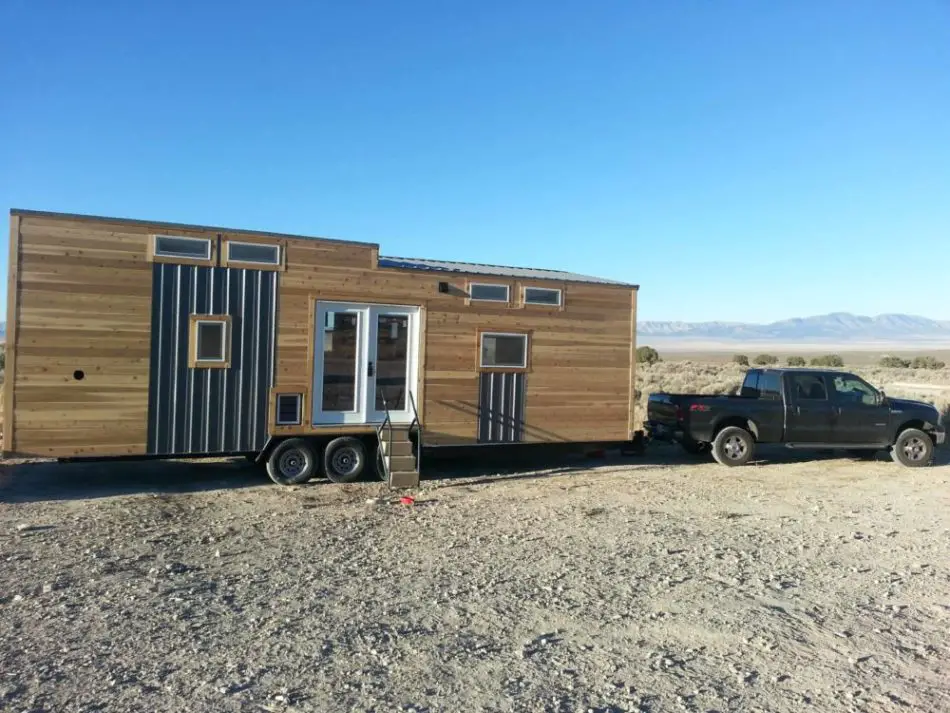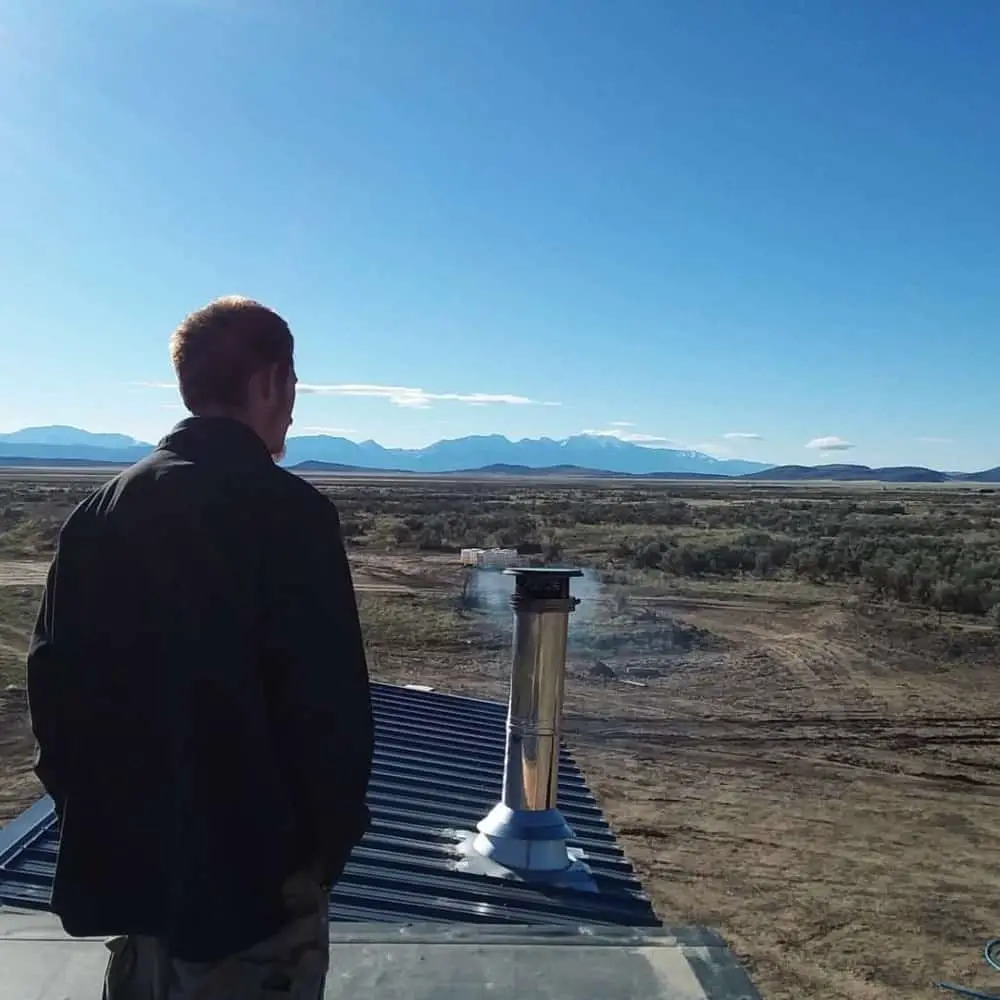Putting a tiny house on your property comes down to two big questions: Location and the existence of a main dwelling already on the property.

This article has been reviewed in accordance with our editorial policy.
Putting a tiny house on your property without a main dwelling is complicated and varies drastically by county. Therefore, we will review the requirements for putting a tiny house in your backyard, assuming there is already a house on the property.
So, can you put a tiny house in your backyard? Yes, depending on your location. Different states have different requirements, as well as counties within the state. Here we will review how to determine if your property qualifies.
My husband and I have been living tiny for years now and I know the legality of living tiny is complicated and changes frequently. We have had a tiny house in 5 different states (so far!) and they are all different. But here’s some information to get you started on your journey.
This information applies to what we have learned and researched in the United States of America, and it will likely be different if you live in another country.
I am not a lawyer and this is not legal advice. Please consult a lawyer if you have concerns about the legality of your living situation.
How to Find Out if a Tiny Home is Legal in Your Location
The best way to find out if you can put a tiny house on your property is to call your local county building office. But, asking the right questions is key, here are steps you can take to help ask the right questions.
1. Determine the tiny house you want
Spend some time looking around at tiny houses and get a good idea of what you want. Here are some examples of different styles of tiny houses: wood tiny house, container tiny house, and trailer tiny house.
Be sure to check the costs and availability of what you want. For example, if you want a modified shipping container but are unable to find anyone available to build such a specialized unit you may have to change your plan.
2. Write out the answers to these questions
Next, write out what you want in a tiny house by answering these questions.
- What is the square footage and dimensions of the house?
- What will the house be built out of?
- Will the house need extra power or septic installation or will you be adding solar?
Here is some more information to help you determine the size of house you may want.
3. Call your local county building department
States often refer to buildings for additional living quarters as accessory dwelling units (AUDs). Since tiny houses can be a buzzer word, it will help to ask your county the requirements they have for an AUD. Often there are little to no requirements.
However, be sure to ask specific questions including how the house is made. There may not be any requirements for a stick-built house but an altered shipping container might fall into a different category.
Where we live in Nevada, does not have any requirements for an AUD on the property under certain square footage. However, when we asked about a shipping container they said that any alterations to a container needed to have engineered plans to confirm structural integrity.
Be sure to ask your county about square footage. The technical size of a tiny house varies depending on who you ask and your county will most definitely have a restriction on the size that can be built.
Here is a list of questions to get you started, but you may need to be more specific depending on the county’s answers.
- Can I build (or place) an AUD in my backyard?
- What are the square footage requirements?
- Do the requirements change if it is built out of this material?
- Is my main panel big enough to add a 30 or 50-amp RV circuit?
- Can I add another bathroom to my septic?
- Can I have a kitchen in my AUD and what is considered a kitchen?
- Are there any additional requirements if my AUD comes with solar?
County Requirements
Most counties will have different requirements for those questions. Besides adding an AUD and the square footage regulations, the biggest questions relate to having the house tied into your home electric and septic or being off-grid.
It is easier and often cheaper to put a tiny house in your backyard that has RV hookups and ties into your septic. This avoids the costs and complications of solar. However, if your main panel is not big enough or you are not allowed to add to your septic, then these can become costly. Adding an extra circuit for your tiny house depends on county codes.
If you want to avoid the septic concern you can use a composting toilet. Here are our recommendations for a composting toilet. Also, you should use a French drain for any gray water.
Lastly, ask about a kitchen. Although laws around this are changing, it is still important in some places. Some counties consider an alternate dwelling if it has a kitchen, which usually includes a stove. If this is the case there may be fewer requirements if you don’t include a stove in your tiny house.
Do you need a permit to build a tiny house in your backyard?
There are many aspects to take into account when thinking about adding a tiny house in your backyard. Will it be off-grid or tied into your electric and septic? Will it be on a foundation or on wheels? All of these will change the answer to the permits you will need.
You will need a permit if you are building on a foundation, or “breaking ground”. If you are building on a foundation, usually regardless of size, your counties will require some kind of permit. You will need to follow county codes, such as how far the structure needs to be from the fence line and more.
This is part of the reason why tiny houses are such a buzzer word to the county. People have been building small AUDs for years but when they started putting them on trailers the game changed. Now you can put a house anywhere and move it at any time. The counties didn’t know how to regulate this anymore.
As tiny houses grow in popularity, laws around them are becoming more lenient. Many counties allow tiny houses on wheels in your backyard. And you will likely not need a permit for those.
However, you will need a permit if you are hooking up to your septic. Any additions to a septic tank require permits.
You may also need a permit for hooking up to electricity, this also depends on your county. Although, if you hire an electrical contractor you might not need any permits.
Often, you do not need a permit for a tiny house you buy with solar on it. However, be sure to double-check with your county.
Additionally, there may be HOA requirements. If you live in an HOA-regulated area be sure to call them as well. They are often much more strict on tiny house regulations.
To recap, the permits you may need to put a tiny house in your backyard:
- Building permit for foundation
- Septic Permit
- Electrical permit for more hookups or a main panel upgrade
Can you rent out a tiny house in your backyard?
If you are allowed to have a tiny house in your backyard most counties will allow you to rent it out. If your plan is to rent it out, then add that to the list of questions you need to ask to be safe.
Renting out a tiny house can actually be quite profitable. Some people rent them out on Airbnb for a hefty fee. Tiny houses offer a unique lifestyle that a lot of people are willing to pay more to experience.
Even if you are just renting to tenets, tiny houses can be quite expensive to rent out. If you want to avoid the hassle of permits and getting a tiny house, maybe consider renting out your property for someone who owns their own tiny house.
As tiny houses continue to grow in popularity, more and more people are looking for places to put them. RV lots do not always allow tiny houses and many people want a more rustic place to live in their tiny houses anyway.
When my husband and I moved to Portland, we paid a good amount just for lot-rent. We have always been completely off-grid so we did not need electricity or septic and still paid a lot to have somewhere to park in the city.
There are many appeals to a living tiny, one of which is the ability to easily move. But finding parking is always the most difficult part about moving tiny.
If you are considering putting a tiny house in your backyard just to rent out, I highly recommend renting out the land first. This will simplify things for you and let you test out renting out to others anyway.


